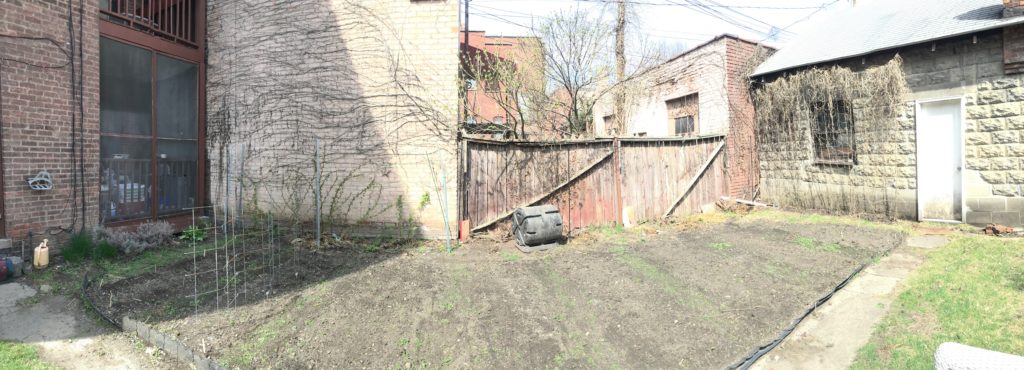
It has felt like spring has been a long time in coming, partly because my garden lives in the northeastern US and partly because I’ve been taking graduate classes in data analytics, which has consumed virtually every scrap of time outside of work. We got snow on March 23, but my seeds were sprouting inside under grow lights in my kitchen, during this season of Unlocking.
Kurt Vonnegut, who spent some time a few miles from me in Schenectady, NY, made this observation, which I find so apt (from a collection titled Palm Sunday. A similar observation is in Cat’s Cradle, one of my favorite books):
“One sort of optional thing you might do is to realize that there are six seasons instead of four. The poetry of four seasons is all wrong for this part of the planet, and this may explain why we are so depressed so much of the time. I mean, spring doesn’t feel like spring a lot of the time, and November is all wrong for autumn, and so on.
Here is the truth about the seasons: Spring is May and June. What could be springier than May and June? Summer is July and August. Really hot, right? Autumn is September and October. See the pumpkins? Smell those burning leaves? Next comes the season called Locking. November and December aren’t winter. They’re Locking. Next comes winter, January and February. Boy! Are they ever cold!
What comes next? Not spring. ‘Unlocking’ comes next. What else could cruel March and only slightly less cruel April be? March and April are not spring. They’re Unlocking.”
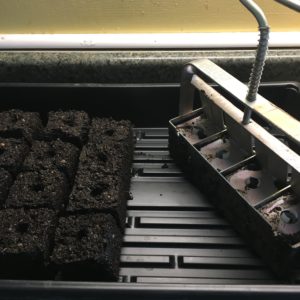



It is in Unlocking that I get the itch to start the garden and begin starting my seeds inside. The first round of seeds got going at the beginning of March: Swiss chard, Lacinato kale, romaine, red-leaf lettuce, butterhead, arugula, Rosa Bianco eggplant, Hungarian wax peppers, spinach, nasturtium, herbs (parsley, dill, chervil, cilantro, basil), and plum, Jersey Boy, Cherokee Purple, and cherry tomatoes. It’s a mixture of plants that need a good head start—tomatoes, eggplants—and those that will be happy going out in the cooler spring temperatures—lettuce and greens.
I used soil blocks again this year (see this post about with more details about the process from last year) and good soil so no weird fungus and struggling seedlings, thank goodness. My kitchen work table was again commandeered into serving as my seed starting station. My neighbors always know that seeds are started by the weird glow that the grow lights cast out my back kitchen windows into the back yard.
It’s been a typical Unlocking: cold, grey and rainy with nights in the 20s alternating with warm and sunny days with nights in the 50s. I know it’s too early to put too much out because anything can still happen. I put my peas in on March 30 because I needed to get in the dirt at least a little. It really was too cold but they have just now started to emerge, and I am grateful.

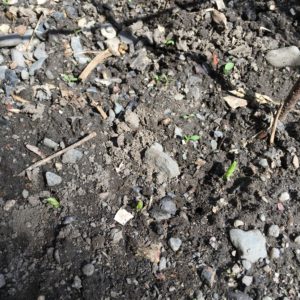
Today was warm and sunny and the first weekend that I don’t have school work to do, so I happily hopped down to the garden to do what I could at this early date. The raspberry bushes that I put in last year are starting to stir and required some attention. They are everbearing varieties, which means that they produce fruit in the spring and again in the fall. Many raspberries produce either in spring or fall and, honestly, why have only one season when you can have two for the same amount of work?
It’s an interesting process; the first year, the canes grow up from the plant and produce berries in the fall. The second year, the part of the old cane that produced fall berries dies back and they produce a spring round of berries on the remaining cane. That cane will not produce again. The new canes that grow up in the spring produce in the fall, and the cycle repeats.
So in the spring, the tops of the first year canes are pruned back. I tied the canes to the supports that I put up (last summer the canes flopped into the garden. The containment system I had rigged up was insufficient to the task: corrected—I hope—this year) so that I can identify easily what gets pruned back entirely at the end of this season. That’s the plan/idea/hope, at least. I can already see canes popping out of the ground outside of what I have determined as the raspberry bed, so those will need to be eradicated as the season wears on.


Besides the raspberries, today I yanked out lots of weeds (whatever they are, they are new to my garden and quite prolific) and got some seeds sown directly into the warm dirt: watermelon, French breakfast, and globe radishes, turnip, beet, scallions, mesclun, spinach, and mâche, the latter planted in deference to my now-departed cousin Chris, who maintained that salad wasn’t really salad if it didn’t have mâche; he was quite the Francophile. I’ve tried to grow it before, but it likes really cool temperatures and my springs haven’t complied so far.
I also re-sowed the garden paths with clover. They provide nitrogen to the soil, smother out weeds, and are pretty resilient to foot traffic. When they bloom, the bees do love their flowers. I also threw out rye and hairy vetch seed in the beds for cover crops, earlier than I usually do but hoping to edge out those pernicious new weeds.
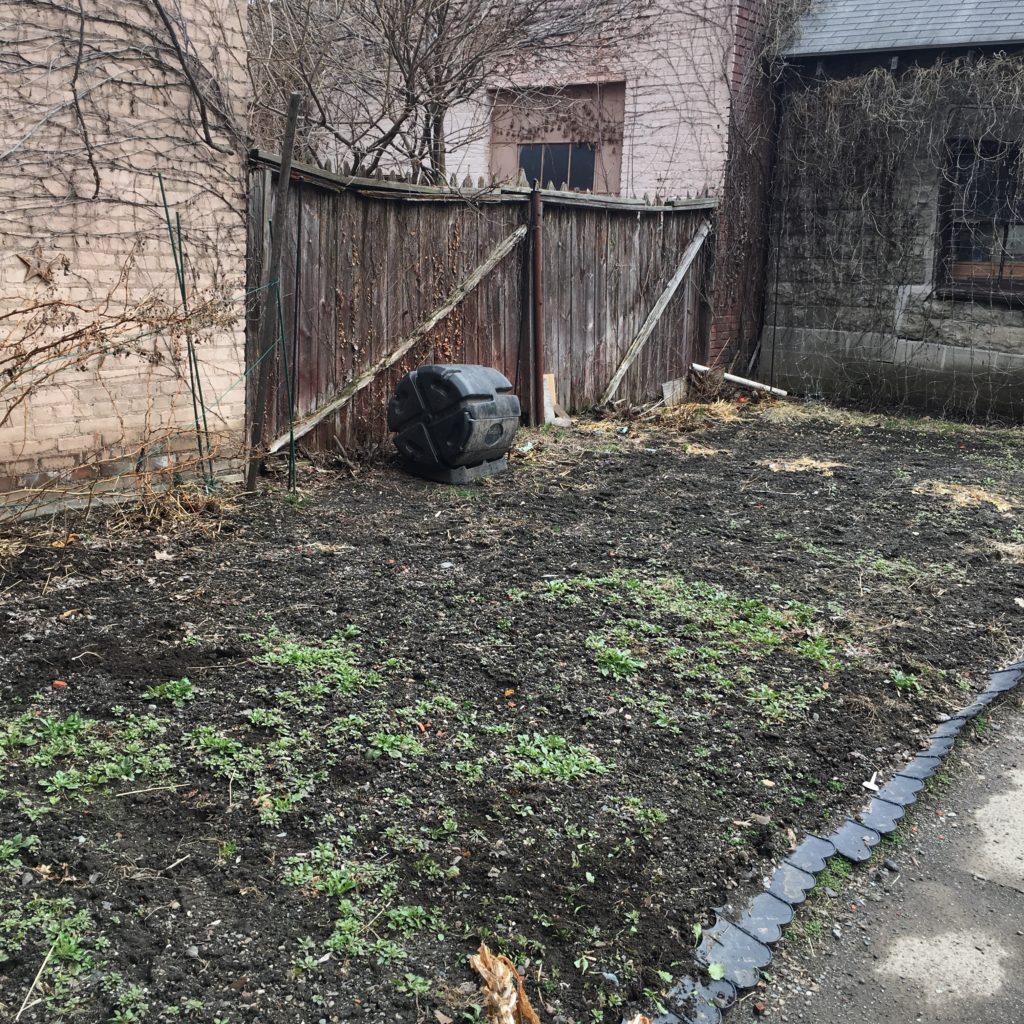
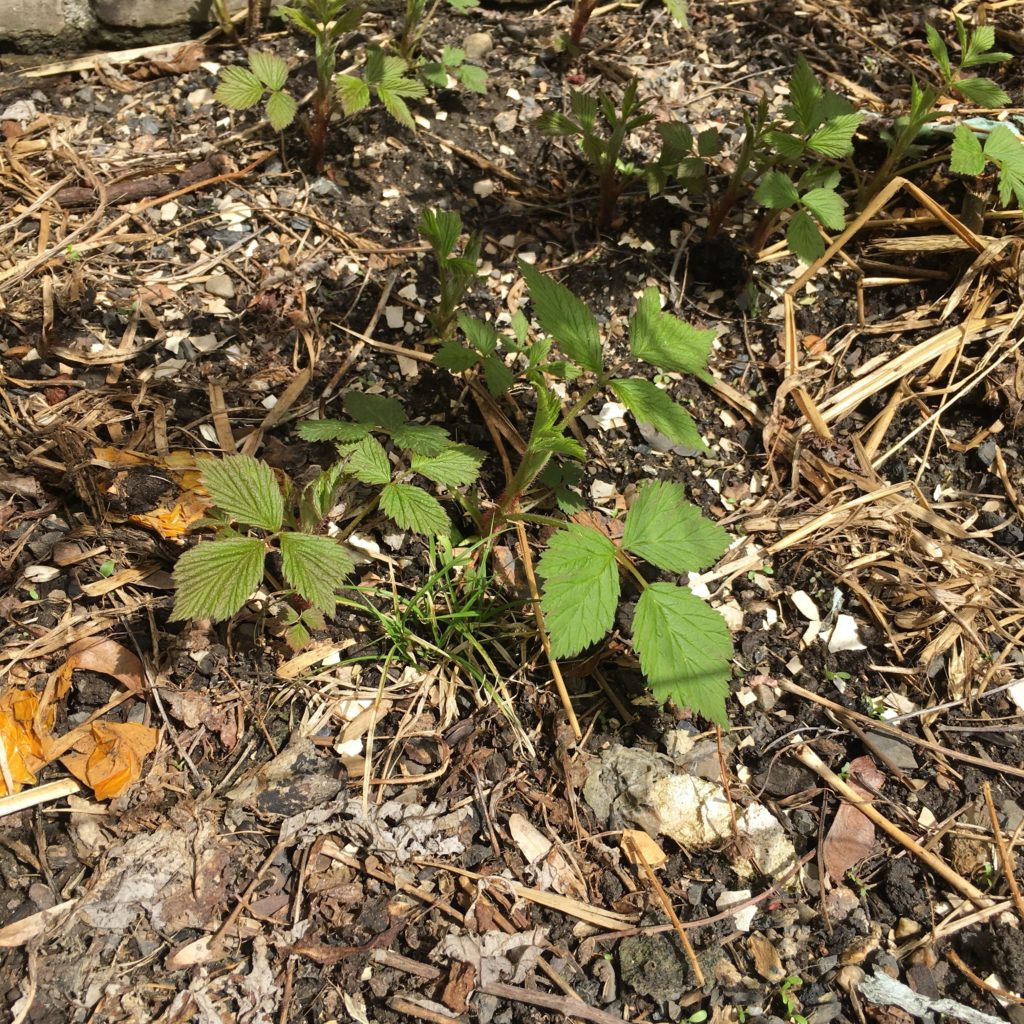
The cooler-weather seedlings are being hardened off: introduced to the outdoors in increments before they planted out for good. The warmer weather tomatoes, eggplant, and peppers stay inside for now, and this weekend I’m starting the cucumbers and zucchini for later transplanting.
So satisfying to be underway. I totally get that not everyone enjoys gardening or being in the dirt and outside. My hope is that those people have other things that feed their spirit the way that gardening feeds mine.